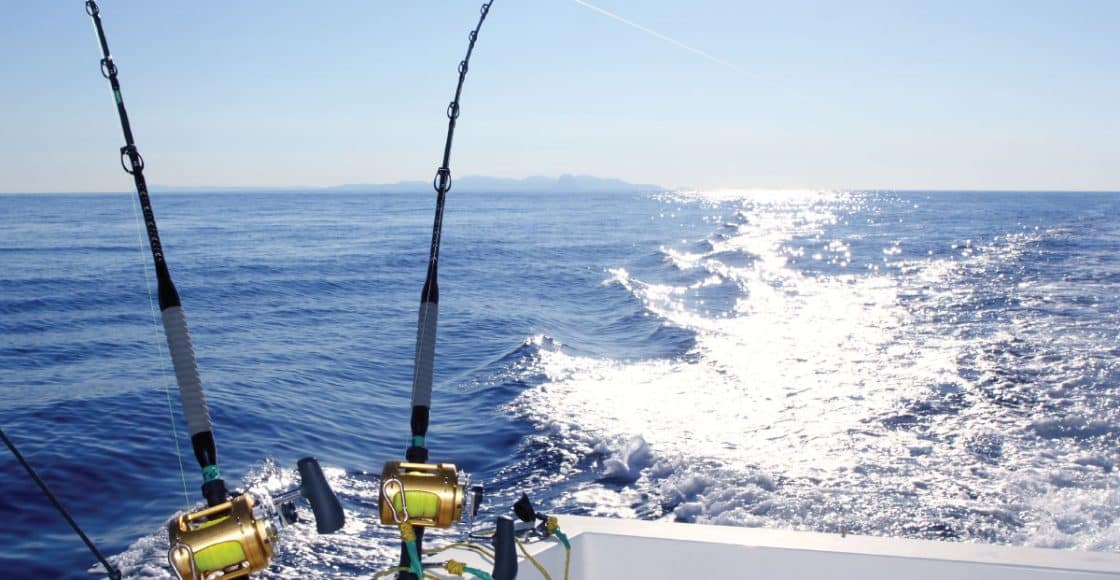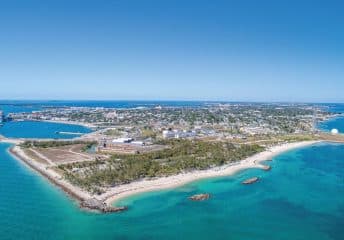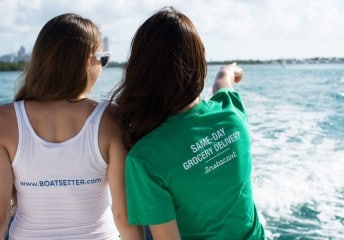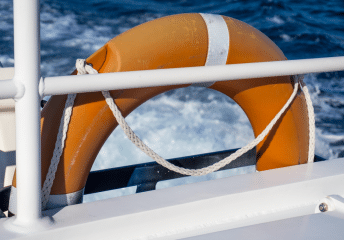What is Deep Sea Fishing? Understanding the Basics
Last Updated on February 13, 2023 by Boatsetter Team
Deep Sea fishing captivates the imagination of countless anglers, and it’s no wonder why — when you’re out in the ocean miles from land, there’s no telling what sort of pelagic predator will take the bait. Will it be a barracuda, a shark, or a billfish? You simply never know, and being surprised at what you catch is the norm rather than the exception.
So, exactly what is deep sea fishing? You may also ask “what is offshore fishing,” because many people would consider the terms interchangeable.
Some others, especially professional anglers, believe that it doesn’t qualify as “offshore” until you reach the edge of the Continental Shelf. Any closer to home they may term “inshore fishing” even though it’s in the ocean, and some eschew the term “deep sea” entirely.
So, how far out is deep sea fishing versus offshore fishing? In truth, there’s no clear definition for any of these terms, and different people use them differently. That said, most people would agree you’re deep-sea fishing when you’re in the ocean, you travel far enough from land that the water is relatively deep, and the target species are oceanic in nature.
Explore Deep Sea Fishing Boat Rentals
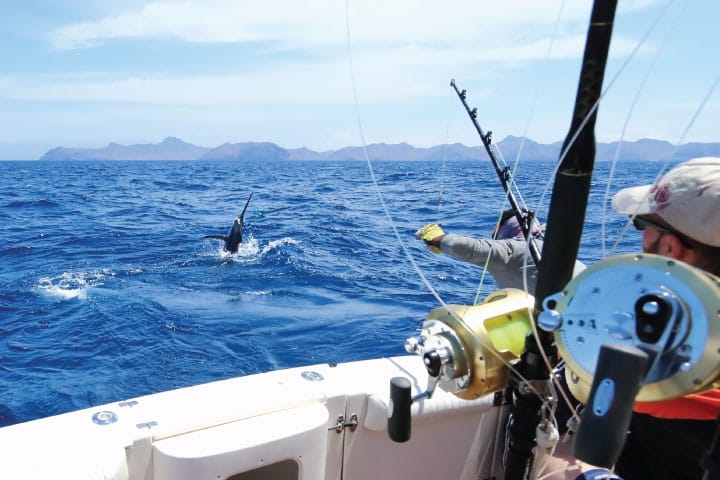
Where to Go Deep Sea Fishing
All of America’s oceanic coastlines offer deep-sea fishing of one type or another. You can go deep sea fishing from San Diego, give it a shot fishing in New Jersey, or try it fishing from Galveston, Texas in the Gulf of Mexico. However, the decision of where to go deep-sea fishing will have a dramatic impact on the experience and especially on how long it takes to cruise to the fishing grounds.
Let’s compare San Diego versus New Jersey, for example.
- From the west coast port, a boat will reach waters several hundred feet deep shortly after leaving the harbor and can be in thousands of feet of water in just 12 or 14 miles.
- But that same boat leaving out of New Jersey would have to cruise for 25 or 30 miles to get into water depths measured by the hundreds of feet and may run 60 or 70 miles before reaching water thousands of feet deep.
Not only does where you go deep sea fishing have a big impact on how long the cruise will be, but it also dictates the types of fish you catch.
- Let’s say you’re fishing in Jacksonville, FL. A deep sea fishing trip could target anything from snappers to groupers to mahi-mahi, depending on how far out you’re willing to go and what tactics and tackle you have.
- But from the Virginia coast northward, you’d likely see a very different selection of species, ranging from black sea bass to tautog to marlin and tuna.
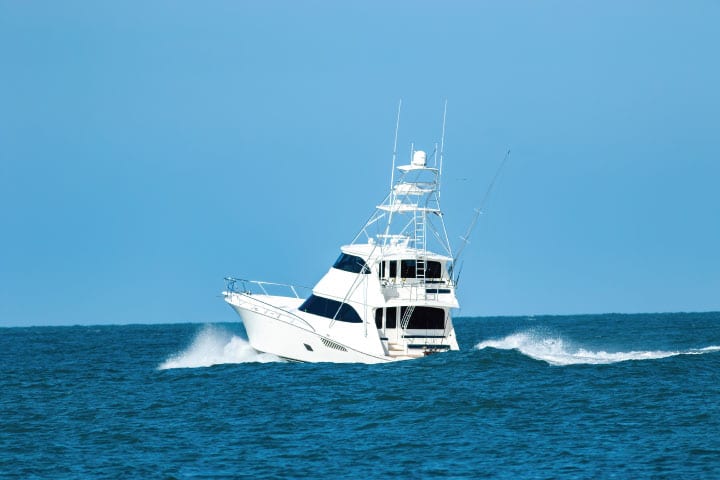
What Do You Catch Deep Sea Fishing?
As we just mentioned, where and how you’re fishing will dictate species selection. But we can narrow down the options into a few basic categories of what you can catch deep sea fishing. If you go far offshore in the hunt for pelagic species, in most of the oceans you could encounter:
- Marlin (multiple species)
- Mahi-mahi
- Sailfish
- Sharks
- Swordfish
- Tilefish
- Tuna (multiple species)
- Wahoo
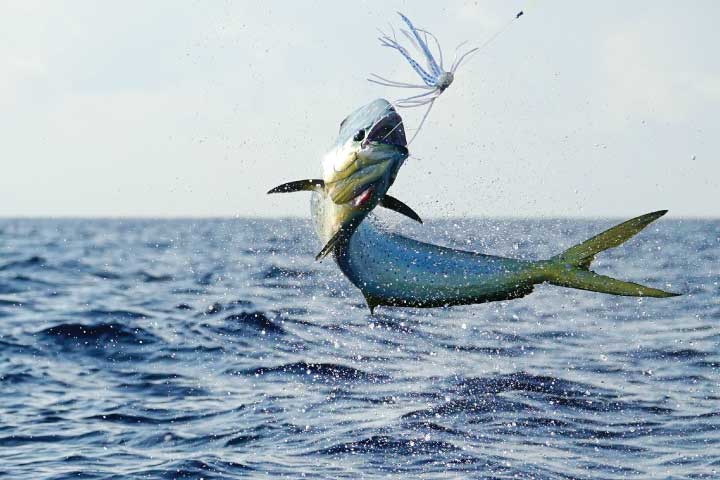
If you don’t go way out into offshore waters, you’ll find a different selection of fish depending on where you are. Common species for different areas include:
North Atlantic Coast
- Black sea bass
- Bluefish
- Cod
- Flounder
- Tautog
- Pollock
- Porgies
- Sharks
- Striped Bass
South Atlantic Coast and the Gulf of Mexico
- Amberjack
- Barracuda
- Cobia
- Grouper (multiple species)
- Jack Crevalle
- King Mackerel
- Snapper (multiple species)
- Sharks (multiple species)
- Spanish Mackerel
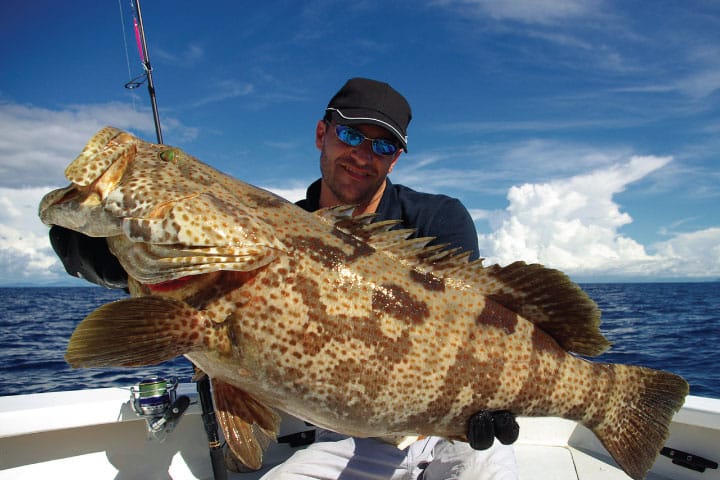
Pacific Coast
- Barracuda
- Calico bass
- Corbina
- Halibut
- Mahi-mahi
- Shark (multiple species)
- Sheepshead
- White sea bass
- Yellowtail
Deep Sea Fishing Cost
You might assume deep sea fishing cost is through the roof, but that doesn’t necessarily have to be the case. True, offshore fishing for pelagics can cost thousands of dollars per trip (in addition to the cost of a boat!) and even when split among the crew, several hundred per person. But many deep sea fishing options cost a whole lot less.
You can get on a large “head boat” or “party boat” which takes out dozens of passengers at a time, and tickets to get aboard can range from $50 to $150 per person. As a rule, the farther out the boat goes the higher the charges will be.
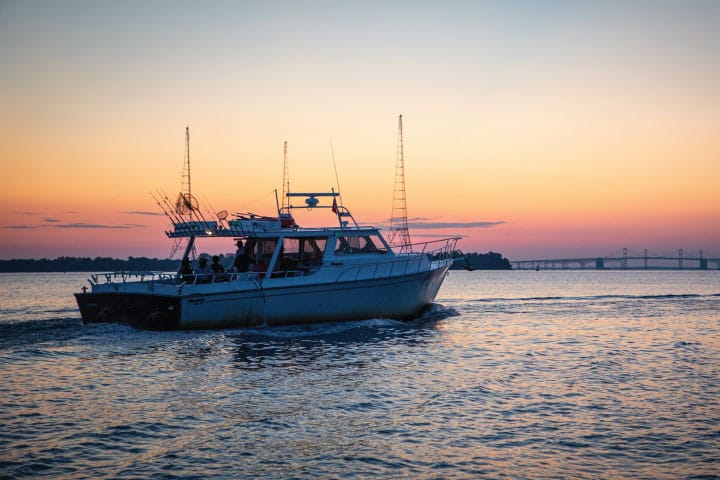
Many anglers will opt to hire a fishing charter to get out to the deep sea spots, and these boats come with all the gear and a captain and crew. Most take up to six anglers, so when you divide up the cost, it isn’t prohibitive. Just what will that cost be? It depends on what part of the nation you’re in, the time of year, and other variables like the current cost of fuel. That said, it will generally range from a couple hundred dollars per person to as much as $500 per person.
If you’d rather fish on your own, another option is to check out some fishing boat rentals. In that case, however, you’ll need your own gear and know-how. Deep sea fishing requires a lot of knowledge to succeed, so most people will go down this route only if they have been deep sea fishing many times.
We can’t get that experience for you, but we can help you get started down the road—check out Deep Sea Fishing Tips, to learn some of the basics.
Boatsetter is a unique boat-sharing platform that gives everyone — whether you own a boat or you’re just renting — the chance to experience life on the water. You can list a boat, book a boat, or make money as a captain.
List. Rent. Earn— Only at Boatsetter
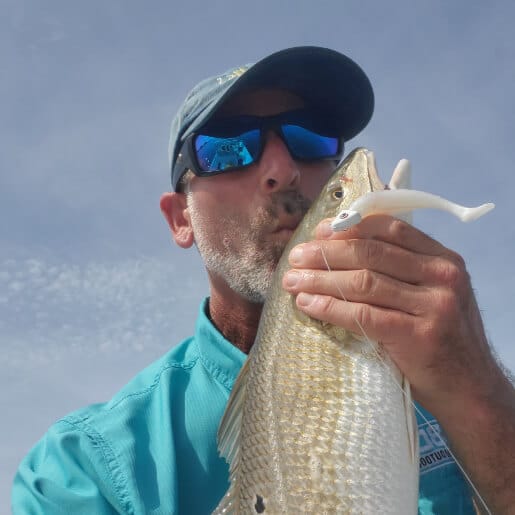
With over three decades of experience in marine journalism, Lenny Rudow has contributed to dozens of boating and fishing publications and websites ranging from BoatU.S. Magazine to BDOutdoors.com. Rudow is currently the Angler in Chief at Rudow’s FishTalk, he is a past president of Boating Writers International (BWI), a graduate of the Westlawn School of Yacht Design, and has won numerous BWI and OWAA writing awards.
